Top designers, academics featured in architecture lecture series
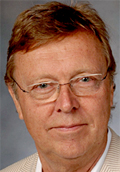
Lars Lerup
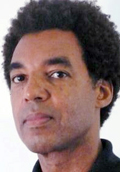
Rick Lowe

John McMorrough

Miguel Roldán
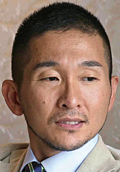
Yasufumi Nakamori
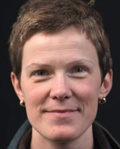
Karin Jaschke

Jon Goodbun
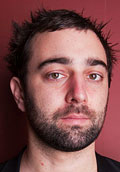
Roland Snook
A diverse group of architectural design and academic leaders shared their knowledge and experiences during the Texas A&M Department of Architecture’s 2012 Spring Lecture Series. The lectures, open to the public, took place in Preston Geren Auditorium.
Feb. 13 — Lars Lerup
professor of architecture, Rice University
Lerup’s work focuses on the intersection of nature and culture in the contemporary American metropolis, and on Houston in particular.
The former dean of Rice’s School of Architecture, he pushed Rice-bred architects to think less about individual buildings and more about the urban landscape while instituting a more rigorous focus on design research, prototyping and material advancements in fabrication and construction. He also introduced computer technology to every part of the curriculum.
In his 2011 book “ [One Million Acres & No Zoning] (http://www.archnewsnow.com/features/Feature368.htm) ,” Lerup considers Houston as a test case for 21st Century urbanism and our understanding of unregulated cities everywhere.
“Lerup has written a rowdy, roiling, and reckless anthem to Houston as representative of a city where smart developer-risk will usually somehow triumph in terms of the ‘big picture’ of an efficacious and livable and flexibly growing city,” wrote the Architectural Record’s Norman Weinstein in a review. “What a rousing, fanciful, and intelligently designed irritation this book is to my most cherished shibboleths regarding urbanism. ”
Feb. 20 — Rick Lowe
founder of Project Row Houses
Lowe spearheaded the creation of [Project Row Houses] (http://projectrowhouses.org/) , a neighborhood-based nonprofit art and cultural organization in Houston’s northern Third Ward that aims to create community through the celebration of art, African American history and culture. A spinoff corporation provides low-income rental housing by designing and building nine low-income housing units.
PRH’s programs, which encompassarts and culture, neighborhood revitalization, low-income housing, education, historic preservation, and community service,operate on the principle that art—and the community it creates— can be the foundation for revitalizing depressed inner-city neighborhoods.
Since its inception in 1993, Lowe has helped PRH grow from its original block and a half to six blocks, and from 22 houses to 40 properties, including twelve artist exhibition and/or residency spaces, seven houses for young mothers, artist residencies, office spaces, a community gallery, a park, low-income residential and commercial spaces.
“It’s been amazing,” he told [The Huffington Post] (http://www.huffingtonpost.com/gregory-sholette/activism-as-art-shotgun-s_b_785109.html#s185219) , “to see some of the women come into the (young mothers) program completely dejected, with low self-esteem and no possibilities of going anywhere, and by giving them just a little bit of structure how powerful they've come to be.”
Feb. 27 — John McMorrough
chairman of University of Michigan’s Taubman College of Architecture and Urban Planning, principal at studio APT
McMorrough, who has headed the University of Michigan’s Architecture program since 2010, had previous academic posts at the Austin E. Knowlton School of Architecture at Ohio State University, Northeastern University, Harvard University, Massachusetts Institute of Technology and Yale University.
His current writings on the problematics of contemporary design include treatments of supergraphics, pedestrian malls, and the apocalypse.
In addition to serving as principal in Columbus, Ohio’s studio APT, he has held professional positions in a number of architectural firms, including the Office of Metropolitan Architecture in Rotterdam, Rothman Partners in Boston, Oaklander, Coogan & Vitto in New York and Ellerbe Becket in Kansas City.
McMorrough has a Ph.D. in architectural history, where his doctoral research work focused on the interplay between commodity and media in post-war architectural discourse, and a post-professional M.Arch. from the Harvard Graduate School of Design, in addition to a B.Arch. from the University of Kansas. He is a registered architect in the state of New York and a member of the Society of Architectural Historians.
March 7 — Miguel Roldán
adjunct professor of architecture for Texas A&M’s study abroad program in Spain,
founding principal,
[R+B Architects]
(http://www.roldanberengue.com/)
.
Roldán, who founded R+B Architects with Mercé Berengué in 1988, is interested in the moment when ideas move themselves into the territory of promises, in discovering promises in a problematic site, in a confusing program, in a low budget, in an incomplete product or in an uneven slope.
“A good problem,” he said, “is a good resource.”
He and Berengue, he said, have always liked to challenge students to compete, and to irreverently face challenges which are supposedly beyond their level of architectonic maturity.
“We confide in the fact that architecture not only has a strong base in acquired experience and technical knowledge, but that part of the magic of architecture resides in intuition and risk.
Roldán and Berengue drew raves for their [design] (http://one.arch.tamu.edu/news/2011/5/19/roldan-tower/) of the Placa Europa, a new social housing tower in Barcelona. The design overcame the strictures of regulatory protocols to the extent that it’s “hard to believe this is social housing,” wrote an architecture critic.
April 2 — Yasufumi Nakamori
associate curator of photography at Houston’s Museum of Fine Arts, lecturer at Rice University’s Department of Art History
He is the author of “ Katsura: Picturing Modernism in Japanese Architecture: Photographs by Ishimoto Yasuhiro ” for which he won the 2011 Alfred H. Barr, Jr., Award for Smaller Museums, Libraries, Collections, and Exhibitions. The book revisits a collection of photographs of an elegant 17th-century imperial villa in Kyoto that foreshadows Western Modern design.
Nakamori’s recent publications include “Utopia/Dystopia: Construction and Destruction in Photography and Collage,” “Tange Kenzo’s Early Snapshots and the Tradition Debate,” a forthcoming anthology of writings on the architect Tange Kenzo, and “Kawazoe Noboru: Shinkenchiku and the Tradition Debate.”
He is working on a book-length manuscript on architect Isozaki Arata’s writings and participation in avant-garde art and architecture movements in 1960s Japan. His next exhibition will focus on the emergence of experimental and conceptual use of the camera in Japanese art from 1968 to 1978.
April 16 — Karin Jaschke and Jon Goodbun
Two design educators from the United Kingdom, Jon Goodbun from the Royal College of Art and Karin Jaschke from the University of Brighton, presented “Architecture and its Resources: Towards a New Materialist Practice”, the penultimate lecture in the Department of Architecture's Spring 2012 lecture series.
Goodbun, who also serves on the faculty of the Bartlett School of Architecture and the University of Westminster, is working on a book titled “How to Become an Urban Ecologist — Re-imagining the Project of Planning.”
He is a founding member of Scarcity and Creativity in the Built Environment, a project that explores the relationship between scarcity and creativity in the context of the built environment. Project participants are investigating how conditions of scarcity might affect the creativity of different actors involved in the production of architecture and urban design, and how design-led actions might improve the built environment in the future.
Jaschke is subject leader in undergraduate history and theory in architecture and interior architecture at the University of Brighton. Her Ph.D. thesis, currently in the works, examines the engagement of late-modern architects with traditional cultures. She is also developing two conference papers: “Acting Up: Architectural Practice as Performance” and “The Mise-en-scène of Elementary Living: Dutch Architects in the Sahara.”
Both papers draw from her research and recent work on the notion of professional practice as performance formulated by interpretive archaeology. They describe how architecture may approach issues of sustainability and ecology that are both critical and creative.
Jaschke also co-edited the book, “ [Stripping Las Vegas: A Contextual Review of Casino Resort Architecture] (http://arts.brighton.ac.uk/staff/karin-jaschke/portfolio-of-major-works/urban-landscapes) ,” which features pieces by Las Vegas scholars, architects and writers. The book offers starting points for expanding a theoretical discussion on Las Vegas while also serving as a reference work for an architectural readership.
April 23 — Roland Snook
Roland Snook, design director and founding partner of Kokkugia, a progressive architecture and urban design practice with offices in New York and London, will present a lecture titled "Volatile Formation." His design research focuses on emergent design methodologies involving agent-based techniques.
Snook, holds a master’s degree in advanced architectural design from Columbia University, which he attended as a Fulbright Scholar. He completed his undergraduate work at the Royal Melbourne Institute of Technology.
In addition to his work with Kokkugia, Snook teaches graduate studios and seminars at the University of Pennsylvania, Columbia University and is the George Isaac Distinguished Fellow at the University of Southern California. He has also directed design studios and seminars at UCLA, SCI-Arc, Pratt Institute, RMIT, and the Victorian College of the Arts.
Prior to co-founding Kokkugia with partner Robert Stuart-Smith, Snook garnered considerable design and construction experience on high profile projects while working in the offices of Reiser + Umemoto, Ashton Raggatt McDougall and Minifie Nixon.
At Kokkugia, a networked practice that operates through design, research and teaching, Snook explores generative design methodologies developed from the complex self-organizing behavior of biological, social and material systems.
Kokkugia’s work has been published extensively and exhibited internationally, including in New York, Beijing, Xi’an, Melbourne, Moscow, Kiev, Torino, Philadelphia and San Francisco. The firm was the Australian Curators for the 2008 and 2010 Beijing Biennials and is currently working on projects in Australia, Mexico and the United States.
Previous post
Next Post
Tags
Related Posts

AIA gold medalist among spring lecture series speakers

Top researcher, university provost to keynote symposium
Fall lecture series eyed integrated project delivery

Exhibit showcased work of emerging Spanish architects

College symposium spotlights faculty research Oct. 24
Follow Us
Facebook Twitter Vimeo Youtube Flickr RSS
Recent Posts

Planning prof heads study of disaster housing aid

A message from the dean

Former student remembered as expert planner

Leading educator named new head of Architecture Dept.










_thumbnail_small.png)
